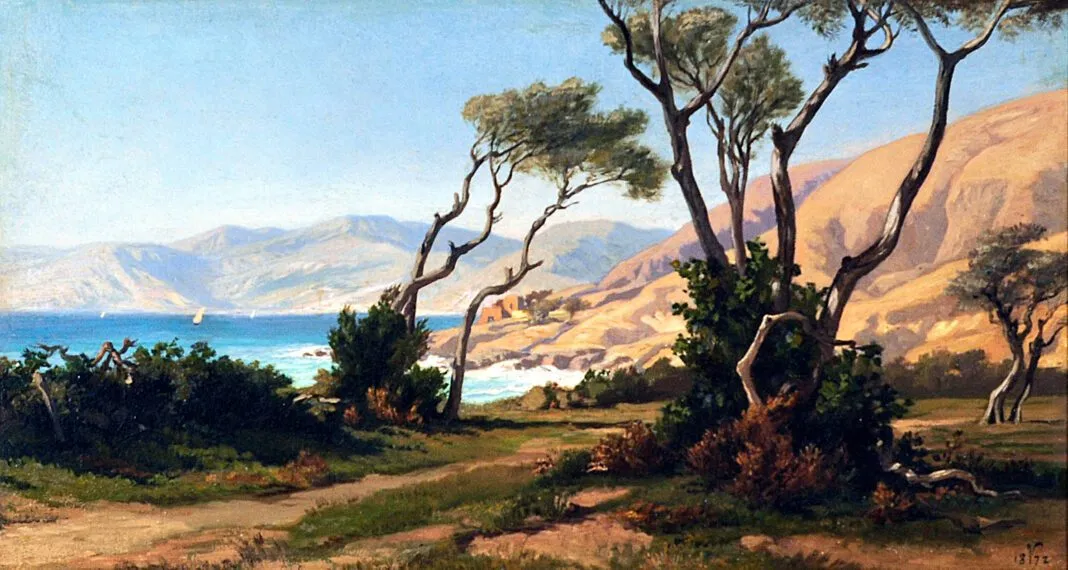On Exhibit: ‘Mediterranea’ at LSU Museum of Art
These days, even a week-long vacation can amount to enviable luxury. But from the 17th to 19th centuries, young upper-class Europeans could be expected to spend that much time merely in transit to their ultimate destinations, sojourning for months—or even years—through France, Italy, Spain and beyond to cultivate their artistic and intellectual interests during what has become known as the “Grand Tour.” In time, Americans would follow in this tradition, delivering artists who used their time abroad to paint their impressions into the likes of works now on display in LSU Museum of Art’s newest exhibition, “Mediterranea: American Art from the Graham D. Williford Collection.”
Dated between 1855 to the early 1920s, the 71 paintings originally curated by Mark White, executive director of the New Mexico Museum of Art, depart from the LSU MOA’s more recent exhibitions of abstract works, showcasing instead an array of landscapes in classical styles inspired by European art schools.
“While the idea of the Grand Tour was winding down in Europe toward the end of the 19th century, it was just pumping up on the American side, since we were only a young country and the Atlantic Ocean took a long time to cross,” says LSU MOA senior curator Michelle Schulte. “Then it started to decline again toward the 1910s because of rising tensions and World War I, after which point art took a much grittier turn away from classical tradition.”
As a result, the paintings by these American artists double as time capsules of an era when visions of antiquity reigned supreme, capturing the places, peoples and cultures soon to undergo immense change on the world stage.
To help visitors soak in the visual journey, antiques shop Circa 1857 has provided furniture for a small seating area, while a hands-on activity station welcomes viewers to create their own travel postcards and mail them out to family and friends. In contrast, a sister exhibition of contemporary film and photography by LSU professor Kevin Benham, “Volterra,” will also be on view, its abstracted views of Etruscan ruins adding intrigue to the way these Grand Tour landmarks have changed over time.
“We’ve designed it to be an experience where people can engage with the past, but also simply appreciate the beauty of the images,” says Schulte. “It’s a wonderful opportunity to see these early American artworks made during a pivotal time in history.” lsumoa.org
For a digital preview of what you’ll find inside the exhibition, check out our TikTok and Instagram.












